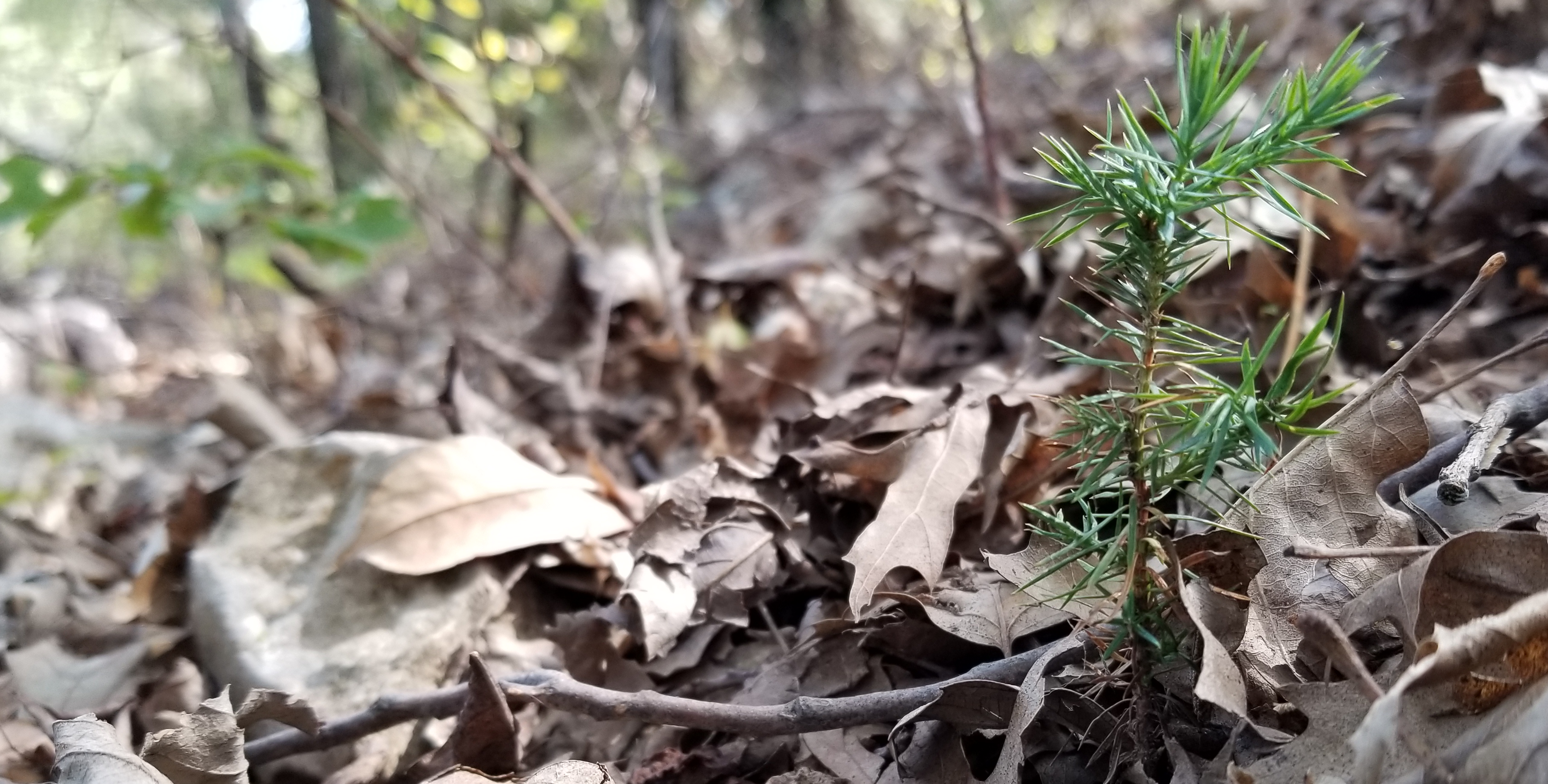
Eastern Redcedar seedling in understory
The Language of the Land
The quality of the story depends on the skill of the listener.
Rumor has it that the Inuit have a hundred or so words in their language for “snow”. I’m sure that most of those would be lost on me because I simply don’t have the sophistication to distinguish them. Having grown up in Southern Oklahoma where there’s no guarantee we’ll even see snow from one year to next - I never developed that much of an appreciation for it outside of the fact that sometimes it makes better snowballs(and hurts worse when you get hit). A discussion on snow between me and an Inuit would go similarly to one between me and a hockey fan after I tell them that I think the Lakers are going to win the SuperbOwl. They’d just shake their head and wander off.
We face a similar situation when it comes to understanding ecological processes taking place on the landscape. We just don’t have the vocabulary for it - and we’ve been listening rather than seeing. Most of us learned about ecological processes, disturbance etc. from classrooms and textbooks. But what do they look like on the ground? Would you know one if it bit you?
Back in the day, shortly after the introduction of tablets (Big Chief tablets, that is), I sat in one class after another where they tried to convince me that language had parts. There were nouns and verbs and … some other things. Once you learned all the parts, they expected you to make sentences from them, and after that, entire paragraphs. The only way to pass the class was to write a story using several paragraphs. This is the point at which it occurred to me I should probably learn the parts.
My experience in field ecology has been much the same - except that I was pretty good at learning the parts this time. After taking a slew of classes that ended in “ology” I had a pretty good handle on the different groups of organisms and how they related to one another. Taxonomy represents the “parts of speech” when it comes to understanding landscapes. You have to know the names of the plants and other critters to start with. I knew how to identify a lot of different plants and animals but I still couldn’t necessarily predict where on the landscape one might find any particular species. With experience I came to recognize more about how plants and animals interacted with the landscape and learned to predict what species were (and weren’t) likely to be found in any particular location. This process is similar to making sentences and paragraphs from the parts of speech.
It’s not what you look at that matters, it’s what you see - Henry David Thoreau
Eventually, I began to recognize more of what the landscape was telling me. I stopped looking so much and started seeing more. Understanding the historical context of the land provides much insight into interpreting what is happening now. What were the pre-settlement vegetation types and disturbance regimes? What land use has taken place since - row crops, livestock grazing? What are the recent land uses and disturbances? Some of this can be found in old maps and aerial imagery if you can find them. Oftentimes, it just isn’t available. There are still indications on the landscape, though, that provide insight into many of those questions.
Knowing what to look for seems to be the key to understanding what landscapes are saying.
An understanding of the species composition of plant communities can indicate both past and current land use and disturbances. Size/Age class of trees provides information regarding the historical plant community and land use. Even old fence rows can indicate past land uses and roughly when they occurred, by the size and species of the trees in them.
It seems then, that the capacity of the landscape to communicate depends greatly on the ecological fluency of the land manager.
Understanding the context of the landscape, how it evolved, how it has been used, and what disturbances have occurred are tremendously important for range managers as they attempt to restore ecological services by implementing disturbance(grazing, fire) across the landscape.
Becoming an effective writer requires an understanding of the parts of speech, sentence structure, etc. An effective land manager doesn’t have to be able to write the story of the landscape, but they do need to understand the plants and processes well enough to be able to read it.
A follow up post with photo examples is here